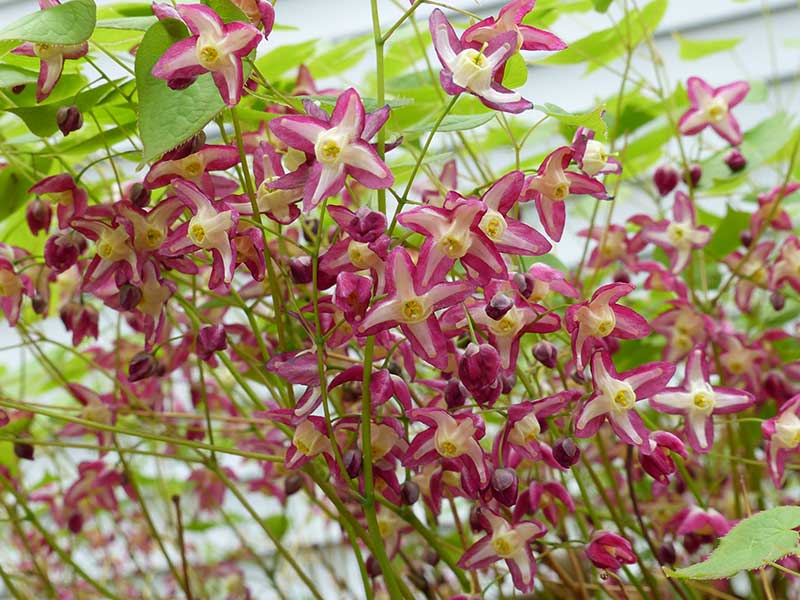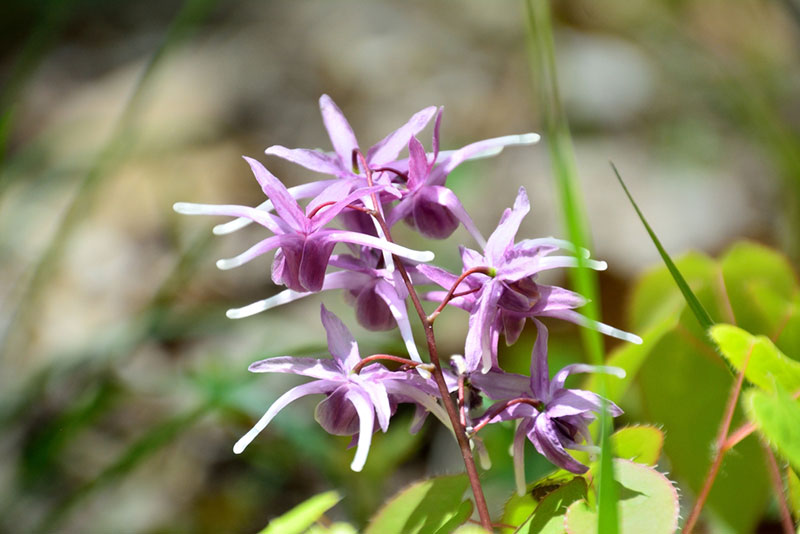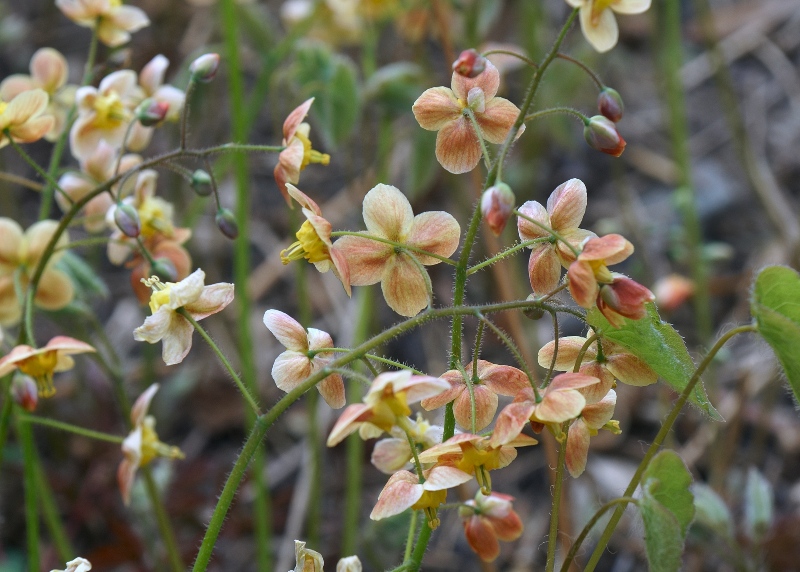
Barrenwort, which is sometimes called Bishop’s Hat, Horny Goat Weed, or Fairy Wings, is a hardy perennial that grows in hardiness growing zones four to nine.
The plant is native to Asia, and when it is mature, the plant will be about 6 to 18 inches in height. During the spring and summer of the year, you will see flowers on the dark green foliage that vary in color.
Blooms can be red, pink, purple, white, or yellow in color. There are several varieties of this plant, and caring for each type is pretty straightforward.
Let’s take a look at some of the care requirements that you will need to know about.
Light and Temperature Requirements
The Barrenwort plant does not do well in harsh sunlight, so it will be grown in partial shade to make sure that the leaves do not burn. It will also do well in a shady area, so consider this when planting it because it will create great ground cover underneath a tree that blocks most of the sunlight. This plant can withstand cooler temperatures, which is why the plant can be seen growing as far north as Maine, even when there is light frost on the ground. If outside temperatures drop below freezing at night, then bring it indoors to help protect the plant.
Watering Requirements
This plant needs regular watering, especially if there has not been much rain in a while. Watering can be cut back on before it grows, but you never want to allow the soil to become dry before providing it with more water. This is a drought-tolerant plant, but you will need to make sure it gets the water that it needs to absorb the nutrients in the soil for it to continue growing.

Soil and Fertilizer Requirements
With this plant, you will want to use soil that is well-draining, which could be sand, clay, or loam. It will grow in neutral soil, but a little bit of acidity will not harm the plant. I’d recommend a soil pH that is between 5 and 7. This is also a plant that is tolerant of rocky soil, so it could make a lovely rock garden cover for your home. When it comes to fertilizer, try using a slow-release formula that is low in nitrogen for the best results.
Pruning
Since this is a plant that spreads quickly, it will need a bit of pruning from time to time. Ideally, you will want to trim off all of the old foliage during the winter to help get it ready for a period of growth in the spring. Make sure to deadhead the blooms when they are done as well so that the growth of new blooms is not hindered. Other than that, you will only want to trim the plant to keep its growth in check if you grow it in a confined space.
Propagation
Propagation of this plant can be done by planting seeds or separating a part of the plant from an existing plant. If you are separating an existing Barrenwort, the propagation should be done in either the spring of the fall of the year. Using a sterile knife, you will need to remove the plant from the ground. Make sure that you dig at least 6 to 7 inches so that you don’t cut the roots. Remove and damaged leaves and excess dirt before separating the plant. Cut the rhizomes apart to separate the two plants fully. Water the plant and keep the soil moist until new leaves form.
Pests and Diseases
The Barrenwort is a plant that does not have a lot of pests, so you will not have a lot of issues growing it. It may be affected by vine weevil as it grows, which is an insect that feeds on the leaves of the plant. This will create small notches in the leaves. They may not seem like much, but this can hinder the growth of the plant. A simple plant-safe insecticide will easily get rid of this pest.
It also does not have a lot of diseases that you will need to worry about. If the roots of the plant are not well-drained, root rot could result. In addition, if the leaves of the plant look mottled with yellow, white, or light green spots, it could have mosaic virus. This will stunt the growth of the plant, and since it cannot be cured once infected, preventing the virus from taking root in your garden is vital.





